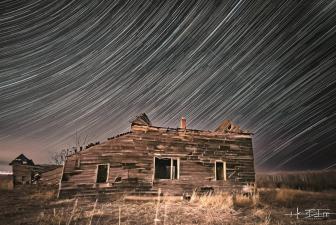Leica’s DIGITAL-MODUL-R; Powerful, But Pricey Leica SLR Digital Back Arrives Page 2
 |
|
|
We now get to the part of the program where I remove the DIGITAL-MODUL-R from
the R9 review unit and attach it to my R8 to see how this metamorphosis occurs,
but alas it was not to be. You see, friends, Leica only has two review units
and they wanted to keep them in one piece, so this back was decidedly non-removable
and I didn't want to start yanking and pulling. (I can hear the sigh of
relief over at Leica America now.) Based on this non-experience, I don't
know how easily this transformation occurs, but my pal Jason Schneider, a renowned
Leica expert, who saw it done, said that if you don't know anything about
cameras it could take 10 minutes, but if your bedtime reading is not Digital
Imaging for Dummies it should only take 2 minutes.
All the back's digital bits do their job in a decidedly non-fussy way,
except for maybe the way Auto White Balance mode sometimes loses its mind and
behaves like white balance bracketing when shooting quickly, which the camera
encourages you to do. This can be corrected later in Photoshop but is still
annoying. Perhaps a firmware update (the current version is 1.1) will fix this,
but no updates were available while I was testing the DIGITAL-MODUL-R.
Image quality was excellent, no doubt helped by the incredible Leica lenses.
A raw file from the DIGITAL-MODUL-R weighs in at 19.3MB compared to a wimpy
7.2 raw file produced by a Canon EOS-1D Mark II N, but is it all pixels? At
ISO settings of 200 or higher, the Leica's files seemed ever so slightly
noisier than the Canon's, but the noise is very tight, much like the grain
in a really fine-grained, high-speed film. The imaging chip also seems just
a bit more than normally sensitive to proper exposure, especially on the overexposure
side with contrasty subject matter. Just get used to the funky Exposure Compensation
lever on the left of the viewfinder and don't worry about it. Nevertheless,
when everything is clicking I've never before seen the Kodachrome II-like
image quality digital files that the DIGITAL-MODUL-R can produce.
 |
|
|
For Leicaphiles Only?
All this image quality and precision engineering comes with a price tag. The
DIGITAL-MODUL-R back is more expensive than a Canon EOS-1D Mark II N and you
still have to buy a camera body to put it on. Don't even talk to the salesperson
about lenses without a platinum card in your wallet. Does that even matter to
the target market? I don't think so.
To paraphrase Tom Hnatiw (www.dreamcargarage.com):
Do you need a digital back like this? If you own a Leica R8 or R9 and want to
go digital, this is your only route and it's the yellow brick road. Do
you want a camera like this? If you own older Leica SLRs with lenses manufactured
after 1965, a used R8 body will be a relatively inexpensive upgrade to get you
into the DIGITAL-MODUL-R's digital world. If none of this is appealing
to you, why are you reading this anyway?
Technical Specifications
Compatible Bodies: R8 and R9
Lenses: All Leica R-lenses as well as all LEICAFLEX SL/SL2
lenses manufactured after 1965
Image Sensor: 3872x2576 pixels (10-megapixel) CCD chip
Active Area: 26.4x17.6mm
Focal Length Factor: 1.37
Sensitivity: ISO 100-1600
Memory Card: Secure Digital card up to 2GB; higher capacities
with firmware upgrade
File Formats: Raw, TIFF, two JPEG-compression levels
Color Spaces: Adobe RGB, sRGB
Color Depth: 16 bit
Longest Shutter Speed: 16 seconds
Burst Exposure: 2 fps: max. 10 images in a row
Display: 1.8" color LCD (130,338 pixels)
Interface: FireWire (IEEE 1394)
Size: 6.22x5.51x3.51"
Weight: 3.075 lbs; 49.2 oz
Power Supply: Rechargeable lithium ion battery
Package Includes: Leica DIGITAL-MODUL-R, power unit, battery,
charger with car adapter, FireWire cable, CCD cover, case for DIGITAL-MODUL-R,
SanDisk 256MB Ultra II Secure Digital card, software, focusing screen with image
field marks
Price: $5950
For more information, contact Leica Camera Inc., 1 Pearl Court, Unit A, Allendale, NJ 07401; (800) 222-0118, (201) 995-0051; www.leica-camera.com.
- Log in or register to post comments

































